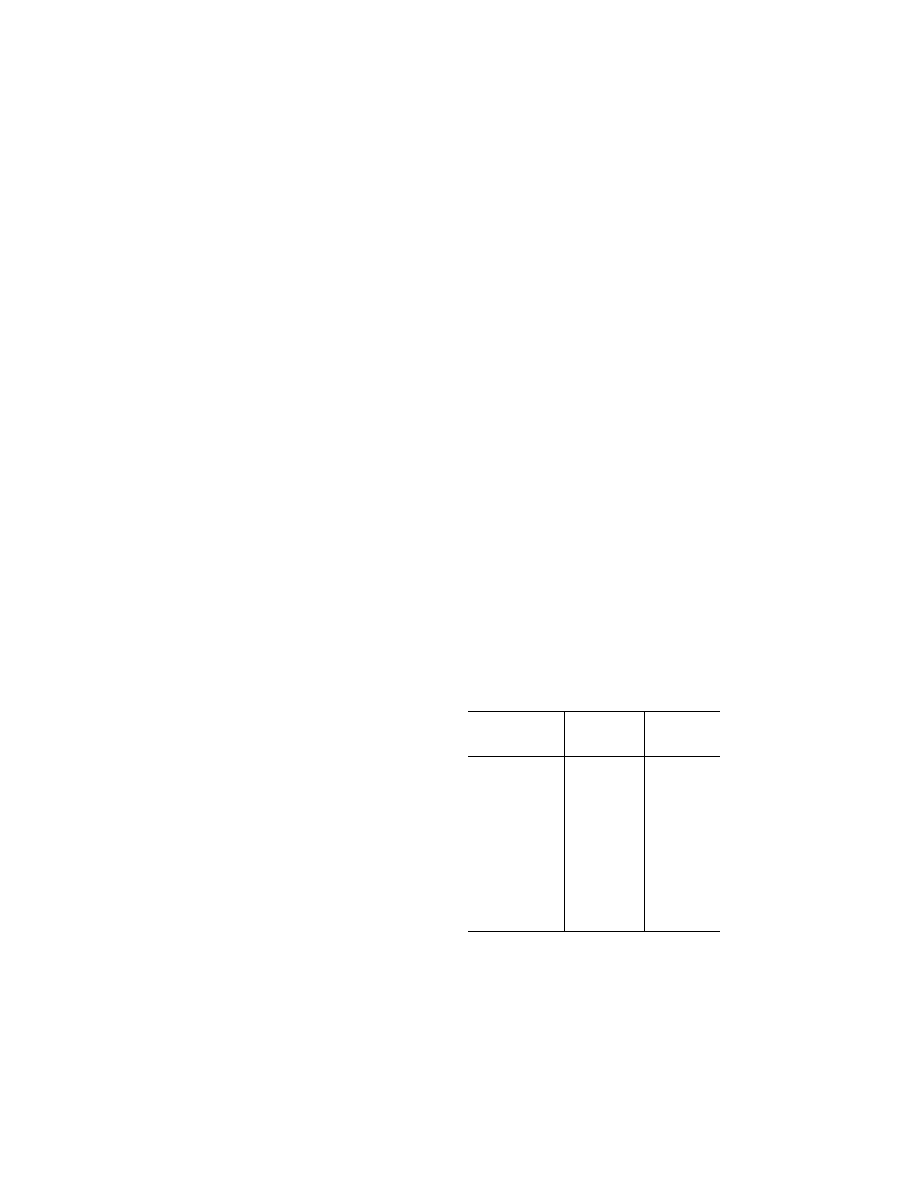
752
14 CFR Ch. I (1–1–24 Edition)
§ 91.533
§ 91.533
Flight attendant require-
ments.
(a) No person may operate an air-
plane unless at least the following
number of flight attendants are on
board the airplane:
(1) For airplanes having more than 19
but less than 51 passengers on board,
one flight attendant.
(2) For airplanes having more than 50
but less than 101 passengers on board,
two flight attendants.
(3) For airplanes having more than
100 passengers on board, two flight at-
tendants plus one additional flight at-
tendant for each unit (or part of a unit)
of 50 passengers above 100.
(b) No person may serve as a flight
attendant on an airplane when required
by paragraph (a) of this section unless
that person has demonstrated to the
pilot in command familiarity with the
necessary functions to be performed in
an emergency or a situation requiring
emergency evacuation and is capable of
using the emergency equipment in-
stalled on that airplane.
§ 91.535
Stowage of food, beverage,
and passenger service equipment
during aircraft movement on the
surface, takeoff, and landing.
(a) No operator may move an aircraft
on the surface, take off, or land when
any food, beverage, or tableware fur-
nished by the operator is located at
any passenger seat.
(b) No operator may move an aircraft
on the surface, take off, or land unless
each food and beverage tray and seat
back tray table is secured in its stowed
position.
(c) No operator may permit an air-
craft to move on the surface, take off,
or land unless each passenger serving
cart is secured in its stowed position.
(d) No operator may permit an air-
craft to move on the surface, take off,
or land unless each movie screen that
extends into the aisle is stowed.
(e) Each passenger shall comply with
instructions given by a crewmember
with regard to compliance with this
section.
[Doc. No. 26142, 57 FR 42672, Sept. 15, 1992]
§§ 91.536–91.599
[Reserved]
Subpart G—Additional Equipment
and Operating Requirements
for Large and Transport Cat-
egory Aircraft
S
OURCE
: Docket No. 18334, 54 FR 34318, Aug.
18, 1989, unless otherwise noted.
§ 91.601
Applicability.
This subpart applies to operation of
large and transport category U.S.-reg-
istered civil aircraft.
§ 91.603
Aural speed warning device.
No person may operate a transport
category airplane in air commerce un-
less that airplane is equipped with an
aural speed warning device that com-
plies with § 25.1303(c)(1).
§ 91.605
Transport category civil air-
plane weight limitations.
(a) No person may take off any trans-
port category airplane (other than a
turbine-engine-powered airplane cer-
tificated after September 30, 1958) un-
less—
(1) The takeoff weight does not ex-
ceed the authorized maximum takeoff
weight for the elevation of the airport
of takeoff;
(2) The elevation of the airport of
takeoff is within the altitude range for
which maximum takeoff weights have
been determined;
(3) Normal consumption of fuel and
oil in flight to the airport of intended
landing will leave a weight on arrival
not in excess of the authorized max-
imum landing weight for the elevation
of that airport; and
(4) The elevations of the airport of in-
tended landing and of all specified al-
ternate airports are within the altitude
range for which the maximum landing
weights have been determined.
(b) No person may operate a turbine-
engine-powered transport category air-
plane certificated after September 30,
1958, contrary to the Airplane Flight
Manual, or take off that airplane un-
less—
(1) The takeoff weight does not ex-
ceed the takeoff weight specified in the
VerDate Sep<11>2014
14:00 Mar 14, 2024
Jkt 262047
PO 00000
Frm 00762
Fmt 8010
Sfmt 8010
Q:\14\14V2.TXT
PC31
aworley on LAPBH6H6L3 with DISTILLER

753
Federal Aviation Administration, DOT
§ 91.607
Airplane Flight Manual for the ele-
vation of the airport and for the ambi-
ent temperature existing at the time of
takeoff;
(2) Normal consumption of fuel and
oil in flight to the airport of intended
landing and to the alternate airports
will leave a weight on arrival not in ex-
cess of the landing weight specified in
the Airplane Flight Manual for the ele-
vation of each of the airports involved
and for the ambient temperatures ex-
pected at the time of landing;
(3) The takeoff weight does not ex-
ceed the weight shown in the Airplane
Flight Manual to correspond with the
minimum distances required for take-
off, considering the elevation of the
airport, the runway to be used, the ef-
fective runway gradient, the ambient
temperature and wind component at
the time of takeoff, and, if operating
limitations exist for the minimum dis-
tances required for takeoff from wet
runways, the runway surface condition
(dry or wet). Wet runway distances as-
sociated with grooved or porous fric-
tion course runways, if provided in the
Airplane Flight Manual, may be used
only for runways that are grooved or
treated with a porous friction course
(PFC) overlay, and that the operator
determines are designed, constructed,
and maintained in a manner acceptable
to the Administrator.
(4) Where the takeoff distance in-
cludes a clearway, the clearway dis-
tance is not greater than one-half of—
(i) The takeoff run, in the case of air-
planes certificated after September 30,
1958, and before August 30, 1959; or
(ii) The runway length, in the case of
airplanes certificated after August 29,
1959.
(c) No person may take off a turbine-
engine-powered transport category air-
plane certificated after August 29, 1959,
unless, in addition to the requirements
of paragraph (b) of this section—
(1) The accelerate-stop distance is no
greater than the length of the runway
plus the length of the stopway (if
present); and
(2) The takeoff distance is no greater
than the length of the runway plus the
length of the clearway (if present); and
(3) The takeoff run is no greater than
the length of the runway.
[Doc. No. 18334, 54 FR 34318, Aug. 18, 1989, as
amended by Amdt. 91–256, 63 FR 8321, Feb. 18,
1998]
§ 91.607
Emergency exits for airplanes
carrying passengers for hire.
(a) Notwithstanding any other provi-
sion of this chapter, no person may op-
erate a large airplane (type certificated
under the Civil Air Regulations effec-
tive before April 9, 1957) in passenger-
carrying operations for hire, with more
than the number of occupants—
(1) Allowed under Civil Air Regula-
tions § 4b.362 (a), (b), and (c) as in effect
on December 20, 1951; or
(2) Approved under Special Civil Air
Regulations SR–387, SR–389, SR–389A,
or SR–389B, or under this section as in
effect.
However, an airplane type listed in the
following table may be operated with
up to the listed number of occupants
(including crewmembers) and the cor-
responding number of exits (including
emergency exits and doors) approved
for the emergency exit of passengers or
with an occupant-exit configuration
approved under paragraph (b) or (c) of
this section.
Airplane type
Maximum num-
ber of occupants
including all
crewmembers
Corresponding
number of exits
authorized for
passenger use
B–307 ........................
61 4
B–377 ........................
96 9
C–46 ..........................
67 4
CV–240 ......................
53 6
CV–340 and CV–440
53
6
DC–3 .........................
35 4
DC–3 (Super) ............
39
5
DC–4 .........................
86 5
DC–6 .........................
87 7
DC–6B .......................
112 11
L–18 ...........................
17 3
L–049, L–649, L–749
87
7
L–1049 series ............
96
9
M–202 ........................
53 6
M–404 ........................
53 7
Viscount 700 series ...
53
7
(b) Occupants in addition to those au-
thorized under paragraph (a) of this
section may be carried as follows:
(1) For each additional floor-level
exit at least 24 inches wide by 48 inches
high, with an unobstructed 20-inch-
wide access aisleway between the exit
and the main passenger aisle, 12 addi-
tional occupants.
VerDate Sep<11>2014
14:00 Mar 14, 2024
Jkt 262047
PO 00000
Frm 00763
Fmt 8010
Sfmt 8010
Q:\14\14V2.TXT
PC31
aworley on LAPBH6H6L3 with DISTILLER

